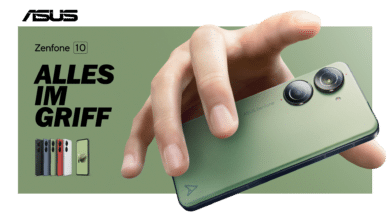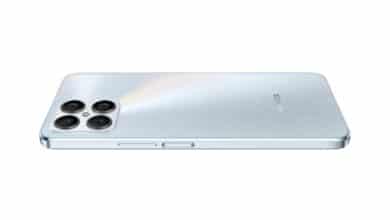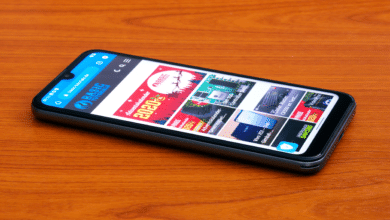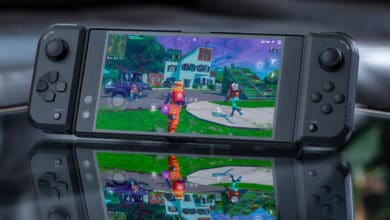
Mobile payment without having to call up an app, data exchange without lifting a finger and many other things are possible today thanks to NFC. But what is it all about? And how does NFC work?
NFC stands for “Near Field Communication”: Near-field communication. This terminology already makes it clear what is at stake. Two devices can communicate with each other at a very short distance. When we talk about communication in the technical field, we usually mean data exchange. This is exactly what NFC is all about. Data can be exchanged between two NFC devices over distances of about ten centimeters.
The fields of application of this technology are very wide. The reason for this is that devices can be made NFC-capable very easily. The manufacturer only has to install a small chip, which is about the size of a one-euro coin, into the device. The device can then communicate with other devices that also have these NFC chips. In addition to smartphones and tablets, many credit and debit cards are now equipped with NFC chips. This greatly simplifies payment at the supermarket checkout – the card only needs to be held up to the reader and the amount is automatically debited.
The mode of operation
Now the question arises how exactly the chip knows which actions it has to perform if it is held against a certain other chip. After all, the price in the supermarket is always different and different actions are also to be carried out when two other NFC devices are held together.
The answer to this is quite simple: The corresponding chips were programmed in this way. The chip used in the supermarket checkout receives the command to read out the payment data of the card which is held against it. He’ll obey that order strictly. After that, everything happens in the same way as with a conventional card payment. NFC therefore does not perform magic, but merely takes over the data transmission. The important difference to many other technologies is that they are contactless.
Data transfer between two active devices, for example between two smartphones, works similarly. These must also be held together exclusively in order to establish a connection. NFC replaces the cable or any other connection between the two devices. Then the command for data exchange or for one-sided data transmission is issued. NFC is a simple radio connection that works at close range.
Access to hotel rooms or other security areas can also theoretically be granted via an NFC chip and a corresponding reader attached to the door.
The NFC chip in the mobile phone can be used by various apps. This controls which data is transferred, what happens to them afterwards and what they are available for. Of course, the user’s consent is always required – simply holding two devices together without confirmation by the user does not establish a connection. In addition, the data transfer is restricted to the area released for this purpose. If, for example, the user selects a photo album that he wants to transfer to a friend, only this one photo album will be transferred via NFC.
This also applies when paying with a smartphone. Credit card or other payment data is stored in a protected app on the smartphone and the supermarket checkout accesses this app and the data stored in it via NFC – not other areas of the smartphone.
However, this only applies to serious applications!
NFC tags
What also makes NFC interesting for many users are NFC tags. These are small, very cheap chips that can be purchased in stores and programmed at will. If a device equipped with an NFC chip is now held to these NFC tags, it reads them. The data stored on the tag is transmitted wirelessly to the reading device via radio link.
These programmable tags are increasingly used, for example, in museums or on posters. By reading the data, the viewer receives additional information. Film trailers, web links and similar things are also increasingly made accessible by small NFC chips.
Users also have the option of programming NFC tags themselves and placing them in their own homes. For example, a day could be programmed that automatically sets an alarm. This could be placed on the bedside table. If the smartphone is stored there in the evening, the alarm clock for the next morning is automatically set.
NFC thus also offers far-reaching possibilities for simplifying everyday life in the home environment.
The Safety of NFC Technology
From a data protection point of view, this is of course fundamentally questionable. Attackers could use certain commands and applications to read the contents of a smartphone, credit card or other device via NFC – without the user noticing or consenting to this. Various tests have shown that attackers were able to gain very extensive access to sensitive data via NFC. Proponents of NFC technology argue here that the attacker would have to get within a few centimeters of the victim’s device, which is extremely unlikely in practice.
However, unknown NFC tags undoubtedly pose a great danger. NFC users should beware of reading these tags as they could contain malware that could allow the attacker access to the smartphone or other device of the reader. There is also the possibility of reprogramming harmless NFC tags that are located in museums, for example, in such a way that they allow attackers access to the devices of readers.
NFC is therefore a useful technology for data transmission, which does not work miracles, but can transfer data quickly and easily. In this respect, it hardly differs from other similar radio technologies. Like these, NFC also poses security risks that users must accept if they do not want to do without the technology. Risks can be minimized by switching off the NFC functionality when it is not needed.



